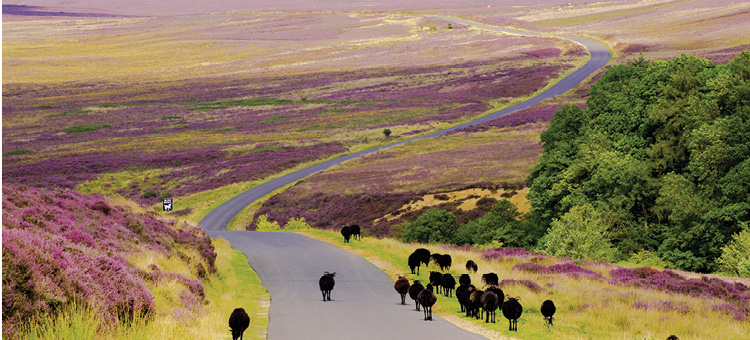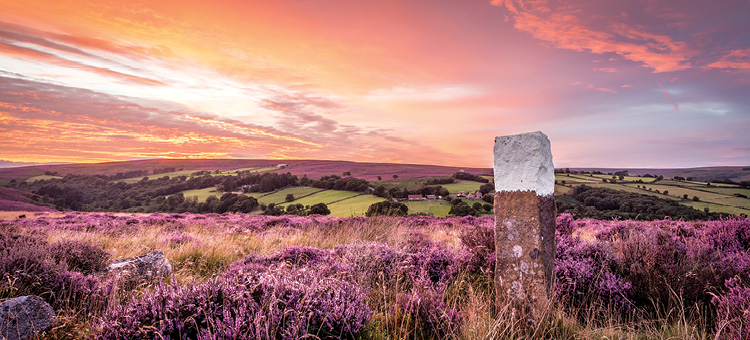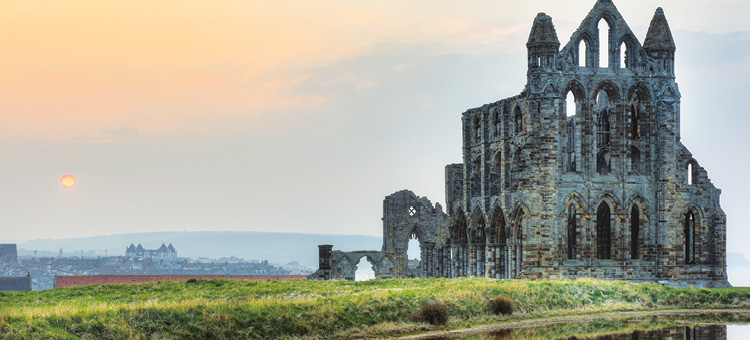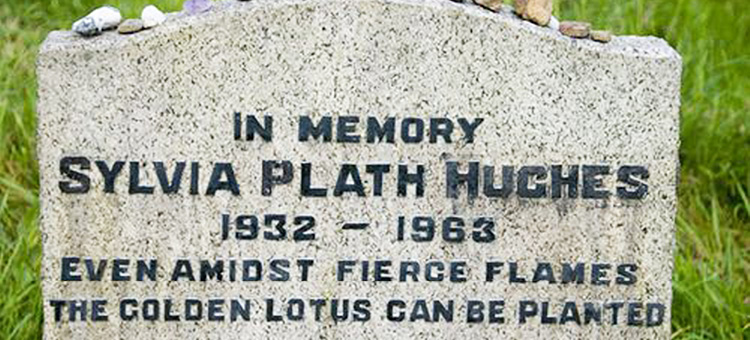London: The large expanse of the Yorkshire moors has had a profound influence on one too many literary classics and writers. This lure of the great moors of England had cast an unshakeable spell on readers. So the decision to set foot on this mystical land and experience its naked wilderness whenever I got a chance to travel to England was always in the back of my mind. Hence, when the car rolled on through the winding roads right into the Yorkshire moors in a dusky winter, my heart was brimming with excitement to be in a land which stirs such distinct shades of emotions.
“It’s not the sea, is it?” asks Mary Lennox, the protagonist of Frances Hodgson Burnett’s ‘The Secret Garden’, arriving in Yorkshire from India. “No, not it,” answered Mrs. Medlock. “Nor it isn’t fields nor mountains, it’s just miles and miles and miles of wild land that nothing grows on but heather and gorse and broom, and nothing lives on but wild ponies and sheep. I feel as if it might be the sea if there were water on it,” said Mary. “It sounds like the sea just now. That’s the wind blowing through the bushes,” Mrs. Medlock said. “It’s a wild, dreary enough place to my mind, though there’s plenty that likes it–particularly when the heather’s in bloom.” The Yorkshire Moors, located in North Yorkshire, England, is a rolling landscape of lush dales (valleys) and vast expanses of windswept and heather-clad hills.
A visit to the haunting skeletal ruins of Whitby Abbey, a seventh-century Christian monastery on top of a cliff near Whitby, surrounded by gravestones, provides you with the obvious hint that this picturesque town in the Yorkshire moors coast is the birthplace of one of world’s most dreaded villain – Dracula.
Burnett’s book tells the story of Mary Lennox, a spoiled and solitary child raised in India by wealthy British parents. She is sent to live with her uncle, Archibald Craven, in his isolated manor in Yorkshire after her parents’ death. She is left to herself by her uncle, who travels often to escape the memory of his deceased wife. Her chambermaid, Martha, is the only one who has time for her. It is Martha who tells Mary about Mrs. Craven’s walled garden, which has been locked up since her death. Mary becomes intrigued by the prospect of the forgotten garden, and her quest to find out the garden’s secrets unearths other secrets hidden in the manor. These discoveries combined with the unlikely friendships she makes along the way help Mary come out of her shell and find new fascination with the world around her.
The moors with its soothing influence thus nourished and cared for a life which otherwise was neglected to wither and die. In the same way, I hoped the moors would have a similar impact on me and provide an experience of a lifetime. But travelling to the moors in winter and not staying back for the spring bloom, I encountered a totally different landscape, unlike Mary Lennox.
Being winter, night rushed in by 5 pm and the car had shed its light on the rugged road that seemed to be cutting through low-growing bushes which ended in the great expanse of the darkness. A wind was rising and making a singular, wild, low, rushing sound. On and on we drove through the darkness. Though the rain stopped, the wind whistled on and made strange sounds. The sinewy road went up and down in what seemed like an eternity. The wide, bleak moors were a vast stretch of black ocean through which I was passing on a strip of dry land.
The night sky was never clearer with stars shining so close and in numerous counts and yet it was pitch dark outside with yellow lights from houses shimmering like fading dots.
The sound of wind gushing through the grass makes one go morbid. The locals call this the wuthering and is the only sound that echoes across the vastness of the moors as if it in itself was a living microcosm; as if the moors were trying to tell you something. The Bronte Parsonage Museum at Haworth, which has become a pilgrimage for thousands of visitors each year, is the place where one of the most famous inhabitants of the Yorkshire moors, Emily Bronte, lived.
Her celebrated classic, ‘Wuthering Heights’, most insistently features the moors landscape as both a setting and an influence on the behaviour of its characters. This influence could be either positive or negative; no one representation of the landscape really overpowers the other. The children in the novel, Catherine and Heathcliff, spend their days frolicking through the Yorkshire moors, a land symbolic of their own shared wildness and affinity with danger. As adults, they become encompassed in a wretched and tragic love triangle, the feelings of which they frequently compare to the tumultuous weather on the moors.
The Yorkshire moors become a place of comfort for them; a sanctuary from endless disapproval and oppression from those at Wuthering Heights. Although their reckless romance endangers everyone around them, they both find solace in the unbound freedom of the moors. The capricious weather is a perfect analogy of the turbulent and chaotic passion of the characters in the novel. The moors mattered a lot to Emily, who was fascinated by their austere beauty and the destructive and consoling powers of the natural world they embodied. The landscape is thus never simply a setting or something to be contemplated in Bronte’s work but an active and shaping presence in the lives of her characters.
One may react intensely to the more grisly aspects of the moors, regardless of the descriptions of its allure and the characters’ enjoyment of it. I started to feel the intensity and depth of the wilderness, unable to decipher whether it evoked happiness or sadness. Heathcliff and Catherine, the eternal lovers, were buried in the same place in one of the barren hilltops of the moors. As one walks across the landscape, the mind plays a fiddle and one can’t but wonder whether they probably lived and died there. A deep sense of belonging and attachment to the moors crept in and startled me, something I was not ready to comprehend. Am I supposed to take pleasure in this sense of meditative closeness to this wet, wild and vast swathe of land or to be wary of sinking into a slough of despond? I had rarely encountered such conflicts before!
The 20th century’s greatest poet Ted Hughes was born here, and Sylvia Plath was buried in the moors. Ted Hughes’ existential poetry becomes more meaningful as one experiences the moors. “Nothing added, nothing taken away.” Each winter takes away the life on the moors, and yet, in spring it blossoms again only to be withered again.” Hughes drew a parallel between the moors and women and said that both have the power of fertility; both have a cyclic process of life and death. The stillness of the moors, he believed, symbolised the silence of death. The meaninglessness and absurdity of one’s life come as a shocking revelation. The moors were now driving me into a deep sense of despair and fright.
A stroll through the moors at night alongside the country road in a chilling winter is the most daring adventure one can ever imagine. A few minutes into the walk and one could hear the howls of wolves. It sent shivers down my spine and that I bolted back into the safety of the country hotel was a foregone conclusion. There are mind-numbing tales of beasts, hounds and devils lurking in the moor, perhaps because from ancient times, people tried to make sense of their fears of a place that was dark, wet, icily windy, eerily noisy, misty and ghoulish. Even in broad daylight, the weather can shift shape in an instant and the friendly village lights in the distance can be blotted out in a befuddling fog. What looks like solid grass can actually be the treacherous green of sphagnum moss – the quagmire moss that covers deep freezing watery pools looking like a deceptively reassuring blanket of green! The rocks in the distance are worn and woven into eerie gargoyle shapes and once the moon came out, well, there are the ghoulish noises! So, it was not really that good a writing on Sir Arthur Cannon Doyle’s part; penning about the scariness of the moor is easy!
“As you value your life, or your reason, keep away from the moor.” So says a line in the ‘The Hound of Baskervilles’ by Sir Arthur Canon Doyle. He constructed the moor as forbidding and unnatural and all seemed helpless in containing it, save the extraordinary Sherlock Holmes. The moor itself supplants the role of the antagonist in this novel. While the criminal lurks beyond our reach, another struggle unfolds up front and centre between the narrator and his setting. That conflict emerges due to Doyle’s careful handling of the landscape throughout the text.
The spine-chilling description of the moor and its long, gloomy curves broken by the jagged and sinister hill creates the same sense of supernatural and mysterious feel that Watson experienced in the novel. The moors now emerge as a sinister netherworld and my dreadful night walk added to the fear. The feeling waking up on a winter morning at the moors coastline at Ravenscar is not one of refreshing delight. But scarier stuff was yet to come. The sight of Whitby town from the Ravenscar peak is a delight to the eyes. It doesn’t take a second thought to drive down to Whitby through the coastline to explore this old seaside town.
A visit to the haunting skeletal ruins of Whitby Abbey, a seventh-century Christian monastery on top of a cliff near Whitby, surrounded by gravestones, provides you with the obvious hint that this picturesque town in the Yorkshire moors coast is the birthplace of one of world’s most dreaded villain – Dracula. Bram Stoker, who breathed life into one of the best known Gothic horror tales, is said to have first seen the name Dracula in a book borrowed from Whitby library and found inspiration for the supernatural tale of Dracula from the colossal remains of Whitby Abbey.
While staying in Whitby, Stoker heard of the shipwreck five years earlier of a Russian vessel called the Dmitry, carrying a cargo of silver sand. With a slightly rearranged name, this became the Demeter from Varna that carries Dracula to Whitby with a cargo of silver sand and boxes of earth. A ‘large dog’ bounds from the wreck and runs up the 199 steps to the church, and from that moment, things go horribly wrong. Dracula has arrived… As one walks away from the Whitby Abbey at night, one can see bats flapping around the old ruins and an uneasy feeling sets in; a feeling of utmost fear, a sense of lurking danger. The Count of Transylvania could be still around…
(The author is Managing Director, Kerala Tourism Development Corporation. He can be reached at rahulr.irs@gmail.com)









